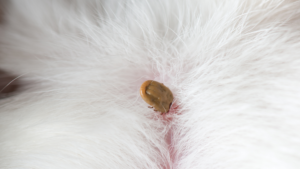What is diabetes mellitus?
Insulin is a hormone produced by the pancreas that controls the amount of glucose in the blood. Within the cells, glucose is converted to energy for the body to use. In the healthy body, high glucose levels stimulate the production of insulin by the pancreas, which helps the glucose move into the cells for use by the body. In diabetes mellitus, there is not enough insulin to move the glucose into the cells. The lack of glucose in the cells and the increase in the blood causes the symptoms and complications of diabetes.
Who is affected?
Across the 2019 calendar year, diabetes was most prevalent in the following breeds:
| Breed | Prevalence (%) |
| Australian Terrier | 2.50 |
| West Highland White Terrier | 1.18 |
| Bichon Frise | 0.90 |
| Australian Silky Terrier | 0.88 |
| Cairn Terrier | 0.66 |
| Miniature Schnauzer | 0.65 |
| Samoyed | 0.59 |
| Toy Poodle | 0.57 |
| Maltese | 0.55 |
| Siberian Husky | 0.38 |
Prevalence = Total number of unique claiming pets / total number of insured pets across 12-month period. Excludes breeds with less than 500 active pet insurance policies.
The Australian Terrier, Cairn Terrier, Miniature Schnauzer, Toy Poodle and Bichon Frise are known to have genetic predispositions to developing diabetes mellitus. Obesity can also increase the risk of a dog developing diabetes.
Signs of diabetes
The classic signs of diabetes include increased urination, thirst and appetite with weight loss particularly in the early stages. Cataracts and subsequent blindness are not uncommon. Some dogs may develop life threatening diabetic ketoacidosis (DKA). DKA is a systemic disease with signs of depression, vomiting and dehydration being common. You may be able to smell a sweet smell on the breath of a diabetic dog. This occurs when the body burns fat for energy, which results in a build-up of ketones in the blood. The resultant sweet smell to the breath is known as ‘acetone’ breath. Ketones may be found in your dog’s urine and there will be high glucose levels in the blood.
Management of diabetes mellitus
Once a dog is diagnosed with diabetes, the condition will generally require lifelong management. The course of treatment depends on the severity of the disease and whether there are any complications.
Uncomplicated cases generally require insulin injections along with dietary changes. Insulin injections may be required once or twice a day. Your veterinarian can teach you how to administer these to your dog. Regular blood glucose monitoring is required to make sure that the insulin is still effective as the dose may change as time passes. In severe cases of diabetes, hospitalisation, intravenous fluids and more frequent check-ups may be required. Diabetic ketoacidosis is an emergency requiring immediate veterinary treatment. Management of secondary issues such as cataracts, infections and other complications is also required in dogs with diabetes. If you are concerned that your dog may have diabetes, get in touch with your Vet.
How much does it cost to treat?
According to PetSure claims data from 2019 (calendar year), the average cost per claim relating to diabetes in dogs is $188, with the highest, single treatment claim cost being $14,520.
Is diabetes mellitus covered by pet insurance?
Diabetes is generally covered by Comprehensive Accidental Injury and Illness pet insurance policies administered by PetSure (check our brand partners at petsure.gholab.com.au/partners), unless related to a pre-existing condition or exclusion. Refer to your policy documents and Product Disclosure Statement for more information.
Pet insurance can help by covering a portion of the eligible vet bill if the unexpected happens. Because it is difficult to predict the costs of veterinary care, it can help to have measures in place to help prepare for the unexpected. Check out our partner network and explore our policy tools to find a pet insurance policy.
Not all conditions or items are covered by Pet Insurance. Refer to the applicable Product Disclosure Statement for information about coverage and exclusions.








